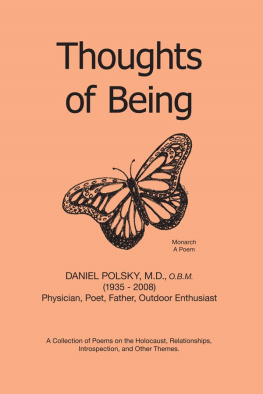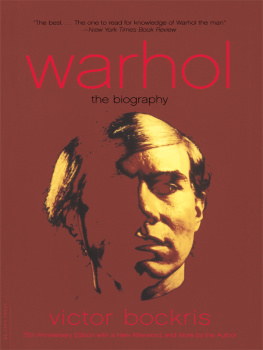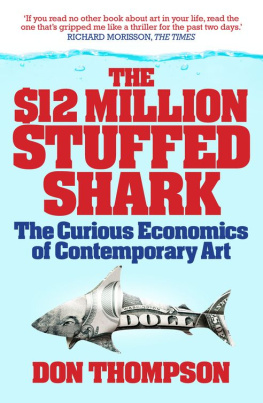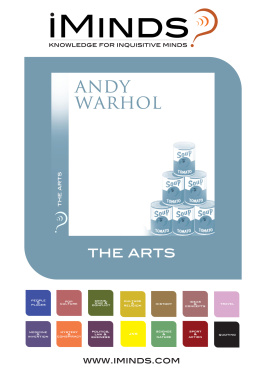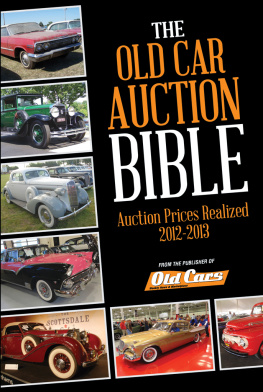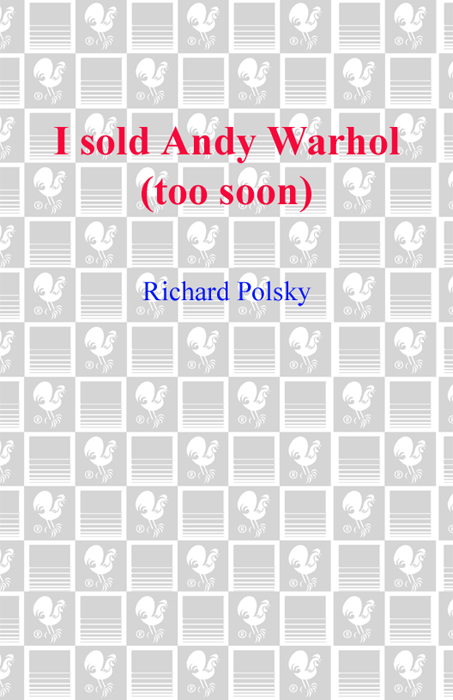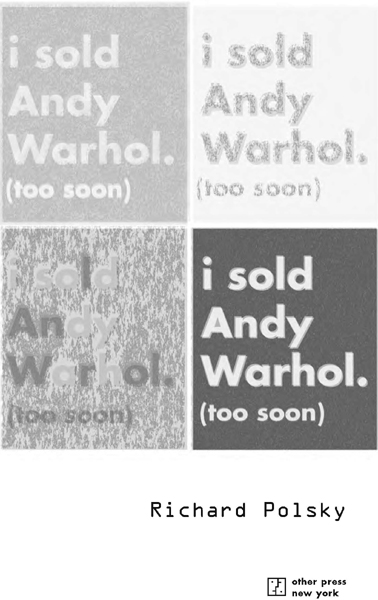introduction
t he 106-page Christies auction catalog arrived with a thud. What was unusual was the volume featured only a single painting for sale. Normally, a catalog this thick contained an entire auctions worth of material. But this was May 2007 and the art market was poised to take the next leap into eight-figure territory. Christies had gone overboard to promote its latest treasure, Andy Warhols Green Car Crash. Aside from the superior quality of the painting, the magnitude of its pre-sale estimate was equally breathtaking: $25 million to $35 million. The auction record for an Andy Warhol painting was $17.3 milliona benchmark set only a season earlier when a large Mao sold to a Hong Kong investor.
As a thirty-year veteran of the art world, I had never seen anything like the marketing effort behind Green Car Crash. Everything felt so over the top. As I thumbed the catalogs pages, I marveled at all the superlatives used to describe the painting: masterpiece, extraordinary, powerful, challenging, and provocative. There were scholarly essays, which spoke of the painting in solemn tones, as if it were the Holy Grail. Then there were the illustrations of the canvas, with close-ups shot from every conceivable angle, allowing the reader to pore over each Benday dot. There was even a section that reproduced a pastiche of 1960s magazine ads used to seduce potential car buyers, though none of these vehicles resembled those in the painting. Perhaps more compelling were the photographs of Andy Warhol. He was captured in his youth, during the early 1960s, when there was no high-end art market to speak of. Back then a million dollars for a painting was inconceivablea plateau not reached until 1980 when Jasper Johnss Three Flags was sold to the Whitney for that exact amount.
Green Car Crash depicted a grisly automobile accident. It must have been a hell of a collision, as the victim had been thrown from the car and impaled on a telephone pole. Just below him, the overturned vehicle was covered in flames. In 1963, Warhol had a photo silk screen made from a newspaper photo of the accident, and transferred the image onto a phthalo-green canvas that measured ninety by eighty inches. Warhols genius was his sense of placement. He intentionally overlapped multiple photo silk screens of the crash, creating rich black tonalities. He also left parts of the canvas blank, giving the viewers eyes a rest from the numbing repetition of the disturbing scene.
The night before Green Car Crash came up for sale, Sothebys had already set the benchmark. In the midst of a record-filled night, it sold a Mark Rothko painting from the collection of David Rockefeller for $72 million. Sothebys had gambled big and won. It guaranteed Rockefeller $46 million for his picture, plus part of the upside. What was so surprising was that the record for an equally good Rothko was $23 millionset only six months earlier in November 2006.
Sothebys had also scored with Francis Bacons painting of Pope Innocent X. This work brought $52 million, helping Sothebys set the new standard for an entire sale of contemporary art. Sothebys grossed $254 million, leading to a post-sale love fest among auction house personnel, obviously anticipating some healthy bonuses. The New York Times gushed the next morning about Sothebys impressive triumph. The reporter wondered, what was next?
It took only twenty-four hours to find out. The following night, Christies topped Sothebys record by about $130 million, tallying $384 million. The sales room crackled with energy, occasionally breaking into applause as painting after painting soared above estimate: a de Kooning from 1982 was knocked down for $19 million, Warhols Lemon Marilyn brought $28 million, and yet another Rothko sold for $26 million.
As for Green Car Crash, it did not disappoint. The rumor was Los Angeles collector Eli Broad coveted the Warhol and planned to donate it to the Los Angeles County Museum of Art. The night of the sale, auctioneer Christopher Burge introduced the painting and immediately began extracting bids from the audience. A paddle shot up each time Burge raised the ante by $500,000. The rooms currency conversion board hummed along with each offer. Experienced auction-goers noticed it listed an additional form of legal tender: the ruble. It was a sign of the timesthe art market was now truly international.
As the bidding reached $50 million, there were only two bidders left vying for the prize. At $60 million, there was bidding from a new place. Larry Gagosian, arguably the worlds most successful dealer, had entered the competition. But he was quickly shoved aside as the painting ultimately sold to an unidentified telephone bidder. Green Car Crash brought $71 million (including buyers premium). Its sale was the period at the end of the sentence for an unprecedented outpouring of money for contemporary artfor the moment.
The next day, I received a number of calls from clients and colleagues who stumbled over their words, desperate to get a handle on what happened. The art market had lost all reason. While it was certainly fun to analyze the weeks events, it wasnt very productive. The sobering message was the emergence of the auction houses as the new alchemists, converting oil and canvas into gold. As other dealers continued to phone, anxiously speculating on what was next, I grew weary of listening to their theories. All I knew for certain was the profession of art dealer was in trouble.
one
breaking up is hard to do
i think its worth at least $300,000, I said over the phone, to fellow art dealer Jonathan Novak.
It doesnt matter what you think. I can get you $200,000 for your Fright Wig painting right now! yelled back Novak. You should take the sure thing. The markets peaking for Warhol. Come on, you only paid around $50,000 for it. Ill even tell you who my client isAndy Roseand he pays fast.
It was early 2005only two years before Green Car Crash came up for sale. By all appearances, the market for contemporary art was robust. Yet, there was something disquieting in the air. The recent Michel Cohen scandal festered like a piece of rotting fruit.
Cohen was a well-known private dealer who managed to abscond with approximately $50 million worth of blue-chip paintings and was now a fugitive from the law. The result was an unsettling wave of mistrust among colleagues. What was so scary was that he was one of us. He was a dealer in good standing, well liked by everyone, having earned the industrys respect after over a decade in business. When Cohen took a multimillion-dollar Picasso painting on consignment from the Richard Gray Gallery, all he did was sign for it. Likewise, when he borrowed millions from Sothebys to recycle into one of its sales, his signature was all that secured the loan. No one asked for bank references. If someone had, he would have found out Cohen was rapidly going broke. He had become addicted to playing the stock market, specifically high-risk options, and kept making the wrong bets.
Cohen became so desperate that he met with an investor in front of a Monet painting at the Metropolitan Museum of Art, and insisted he had the right to sell it. He concocted some outlandish story about how it was once part of the Holocaust plunder. Cohen explained how the original owner had been determined, and the courts had declared his heirs to be the current rightful owners. According to Cohen, the heirs were planning to sell. He explained to his investor that the painting was worth $6.8 million, but if they moved quickly, he could secure it for $5 million. Supposedly, the next day the collector wrote Cohen a check for the requested sum. As you might guess, the investor never saw the money or the painting.


